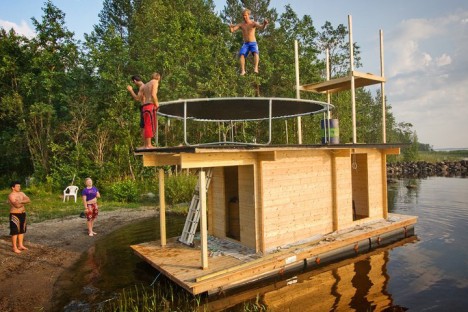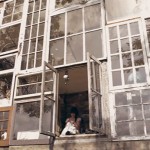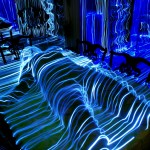The post How to Light and Photograph Smoke and Steam in a Home Studio Setting appeared first on Digital Photography School. It was authored by Ana Mireles.

Every subject has different properties according to shape, color, and material that determine the way you light it. With smoke, you want to keep a dark background and a grazing light. Here are a few things to consider when you light and photograph smoke in a home studio setting.

Have you ever tried to photograph smoke or steam? Perhaps you’re doing a portrait of a smoker or a steaming cup of coffee. Odds are that sooner or later you may face this challenge. Fortunately, the lighting technique is not as elusive as the subject.
Safety first
Before you start to photograph smoke, keep safety in mind – even if it is just smoke. If using a cigarette, always place the cigarette on an ashtray, or place incense on a burner, etc. Remember, you are working with ignited materials – you can never be too careful to avoid burning yourself or starting a fire. Also, it’s always good to have a fire extinguisher handy.
Backdrop
To photograph smoke, you first need to set up a lightbox. If you don’t have one, make the set by putting a piece of cloth as a backdrop. Black or any dark color will create more contrast.

Subject
To create the smoke, you can use an incense stick. It’s the best way to create continuous smoke for a long period of time.

Place the incense far enough from the background so that it’s well separated and the light won’t spill into it.
Light
Set up your flash to the side of the subject. Never place it directly in front of the smoke or it will illuminate the background. Then put a piece of cardboard to direct the light towards the subject. For more tips on this, you can check How to Control Your Background Tones by Manipulating Light Fall-Off.
It also works best if it’s a hard light.
You can always use a continuous light source too, but be sure to narrow the light fall-off by using a modifier or barn doors.

If you place the light in front you won’t get the dark backdrop you need.
Camera
Place your camera in front of the subject, the distance will depend on the focal length of the lens you’re working with. I recommend a telephoto lens because you will get better background compression. To help you decide which one is good for you, see this article.

With a telephoto lens, you can work with a smaller background. The left image was made with a 35mm lens, and the one on the right with a 75mm.
Also, if you work with a telephoto, the background can be smaller. And not less important, you can position your camera further away, which will protect your lens from any damage by the smoke.
Settings
Again, this will depend on the focal length, the distance between camera and subject, and the intensity of your flash. However, I can give you some pointers to take into consideration.
Shutter speed
When setting your shutter speed, try to keep your settings fast so that the lines of the smoke are well-defined, instead of a blurry cloud. This is particularly important if you’re working with a wide source, as with this pot of boiling water. If you’re using something smaller, like a stick of incense, the effect is less drastic. Still, don’t underestimate it.

A longer shutter speed creates a stronger motion blur. This image was made with a 1/30 of a sec.
Aperture
Keep in mind that the smoke is not a flat, static surface. You want your aperture to be wide enough to keep it all in focus. But you don’t want it to be too much that it will capture the texture of the background. Don’t forget to consider other elements of the composition if you have them.

A small aperture creates a deeper depth of field. This image was taken with an f/11.
Focus
Using manual focus, set it before you turn off the lights. Focus the source of steam or smoke you’re using. For example, the tip of the incense stick if you’re going to do some abstract smoke shots. For this to work, you need to use a tripod so you don’t change your distance.

Extra tip: to create more smoke, capture the image just after you put out the flame. If you placed it inside a container, keep it covered to concentrate the smoke, then uncover it to let it all out at once.
ISO
Keep your ISO as low as your lighting and other settings allow you to go. This is because you want to avoid noise as much as possible, and dark colors make it more evident.

Higher ISO settings create more digital noise. This image was taken with a 12800 ISO. Notice all the color speckles? That’s the noise.
Conclusion
This is a very basic studio set-up to photograph smoke that can be done at home with minimum equipment. As you can see, it can still be very effective to photograph smoke. While this can be very easy, capturing the perfect smoke shot may not be, so keep shooting until you’re happy with it.

If you have any other tips to photograph smoke, or would like to share your smoke photos with us, please do so in the comments!
The post How to Light and Photograph Smoke and Steam in a Home Studio Setting appeared first on Digital Photography School. It was authored by Ana Mireles.

Digital Photography School
















































You must be logged in to post a comment.